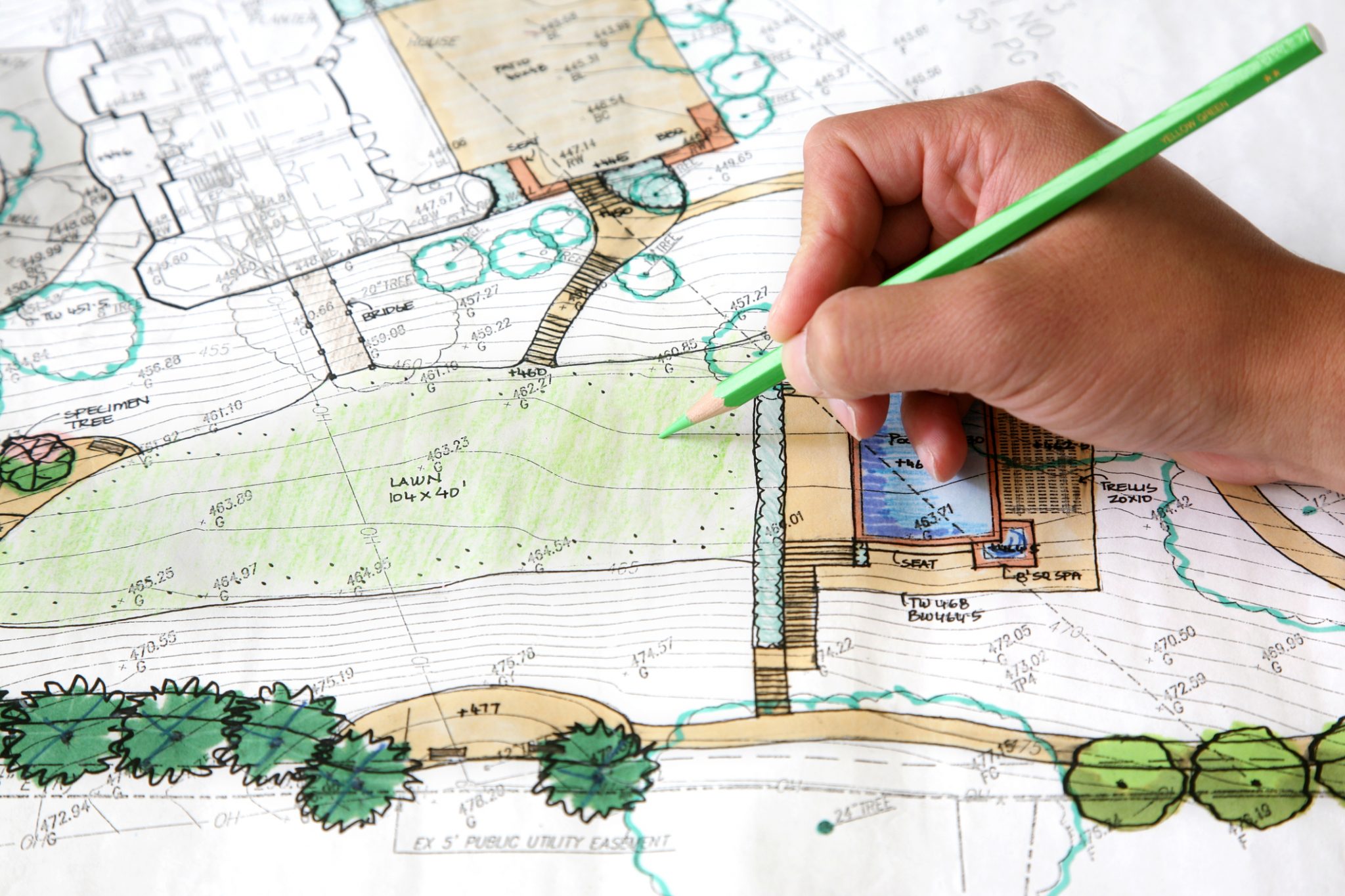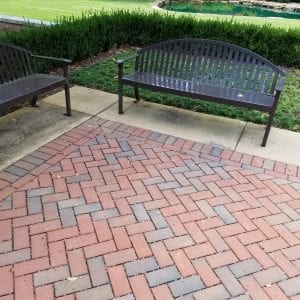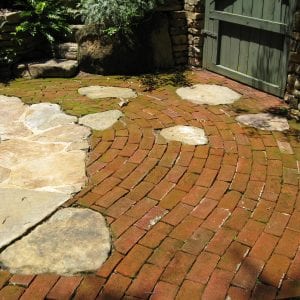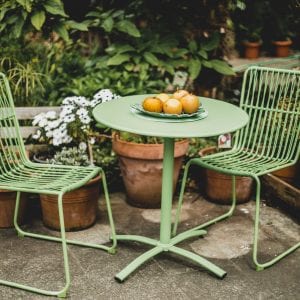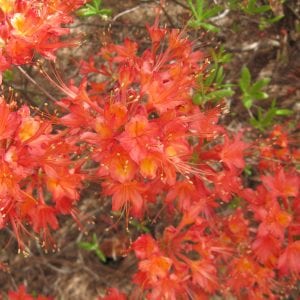Lawn & Garden

Landscape design is the art of developing a property for its greatest use and enjoyment. Effective landscape design is also a science because it involves understanding the environment around your home and selecting plants that perform well in that environment.
In either case, a well-conceived landscape design, properly installed and well maintained, adds value to your property and enhances the quality of your life. There are four ways in which the landscape is valuable: aesthetically, economically, functionally, and environmentally.
Values of Landscape Design
Aesthetic Value
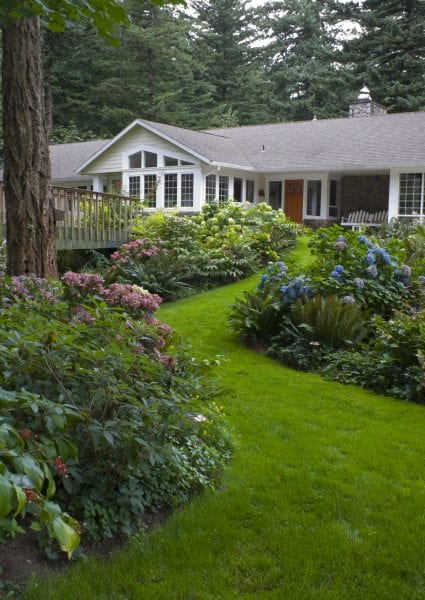
An attractive landscape is aesthetically valuable because it adds beauty or is pleasing to your senses. The visual beauty of your home and property can be enhanced through creative landscaping while undesirable features can be downplayed. The sounds that a landscape offers, like a breeze rustling the leaves in the trees or the sounds of birds or of water splashing in a fountain, enhance the aesthetic qualities of your home environment.
The aroma of flowers or the smell of a freshly mowed lawn and even the taste of fruit from plants that you might have in the landscape are soothing. The sense of touch can also be an aesthetically valuable feature of the landscape. Consider lying in the shade of a stately oak and the feel of a spring or fall breeze. What else can soothe the mind like that?
Economic Value
The well-done landscape adds economic value to your home and property. The value of your home can be increased by as much as 6 to 15 percent as a result of a good landscape. The landscape is not, however, the most valuable feature of your property; the house is. The function of the landscape is to enhance the beauty and, therefore, the economic value of your house.
Thoughtful landscaping can also reduce energy bills by buffering seasonal temperatures. Trees and shrubs can be used to buffer noise, making your outdoor living area more comfortable.
Functional Value
Landscaping offers a special functional value too. Well-placed trees, shrubs, turf, and construction features increase your use of the property. A little shade in the right place, a little sun in another, a place for the kids to play, a private patio, pool, or deck—all add to the enjoyment of being outside.
Landscaping helps you solve landscape problems and cut down on maintenance. For example, groundcover used on a steep hill in the yard can help you avoid lawn maintenance headaches and, on a very steep slope, groundcover may be essential to prevent erosion.
Environmental Value
The landscape not only has functional worth, but it can enhance the environment too. Through careful landscaping, temperatures can be buffered in the summer and winter. Glare and wind can be reduced and water can be used more efficiently. Plants in the landscape also help clean the air of dust and some pollutants. Your landscape also provides a habitat for all kinds of wildlife.
Plan Ahead
Decide on Your Level of Commitment
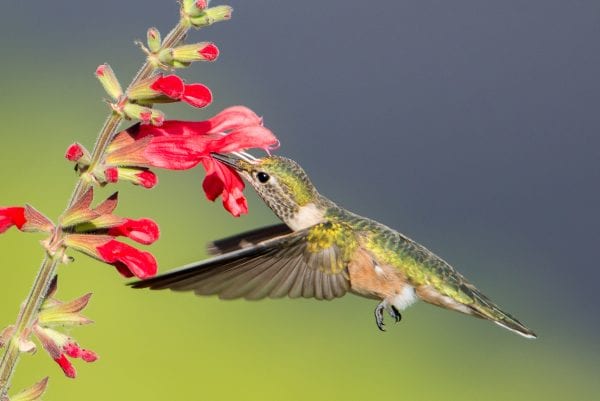
A good landscape starts with a landscape plan. The landscape plan puts on paper your designs for your property. Essentially, the design for your landscape is the scheme for increasing the aesthetic, economic, functional, and environmental value of your property. The plan is a guideline or blueprint for using plants to make that scheme come alive in the land.
True landscape design involves far more than just buying a plant that happens to look nice and sticking it in the ground. Design requires careful thought and learning how trees, shrubs, and construction materials can be used to develop a long-range plan for your property. If this sounds like a lot of work, you’re right!
Your level of commitment to the task determines the approach you decide to take in developing a landscape design for your property. Three approaches are commonly used to landscape a property. Each reflects a different level of commitment, and each has clear advantages and disadvantages:
Hire a Professional to Design and Install
Some people prefer to hire a professional landscape designer to prepare a comprehensive landscape plan and then contract to have it installed.
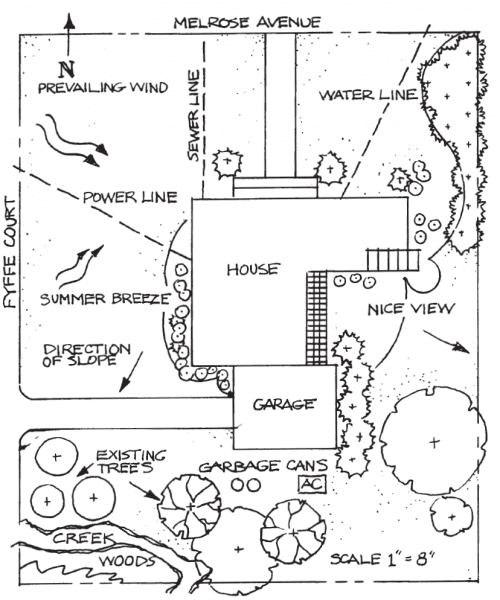
Figure 1. Base map shows notes for site analysis.
An advantage of this approach is that it takes the least amount of time and effort on your part. You simply don’t have to go through the thought and planning process for designing the landscape. You also don’t have to study the kinds of plants that you should use, and you don’t have to do all the work of hauling and planting the plants. This approach also offers the least risk of plant loss or other problems resulting from poor design, plant selection, and incorrect plant installation.
The most obvious disadvantage of this approach is the cost. You have to pay for the services of a professional. But don’t rule out a professional designer based on fear of expense. The design is the least expensive part of landscaping. If you do not have the time, talent, or desire to engage in this type of work, the landscape design professional can fit the design to your budget, help you avoid mistakes, and provide a comprehensive plan that can be installed over time, as money becomes available.
A good designer has the artistic skills to create a landscape that uses and enhances what you already have with plants and construction materials to create a valuable landscape. The designer should also know plants’ aesthetic qualities and maintenance needs to provide a landscape that offers year-round beauty and a maintenance program that suits your lifestyle.
A more subtle disadvantage, which is usually not a problem for most people but which can cause some annoyance for a few homeowners, is that the personal tastes of the designer can differ from yours. Most landscape designers go to great effort to develop a design that suits your tastes and meets your landscape needs, but each designer has his or her own unique design preferences.
Hire a Professional to Design
Some homeowners hire a professional designer to prepare a comprehensive landscape plan and then they install it themselves.
This option cuts down on the time and effort needed to select plants and develop a landscape design. It removes the guesswork of plant selection and reduces the potential for landscape problems later. For those who like to work in the yard, this approach allows them to keep the hands- on element of putting the plants in themselves.
Of course, you do have to pay for the plan, but that is a minor cost compared to the cost of the plants and installation by a professional. There is still the potential for problems down the road, however, if you are not careful to plant correctly.
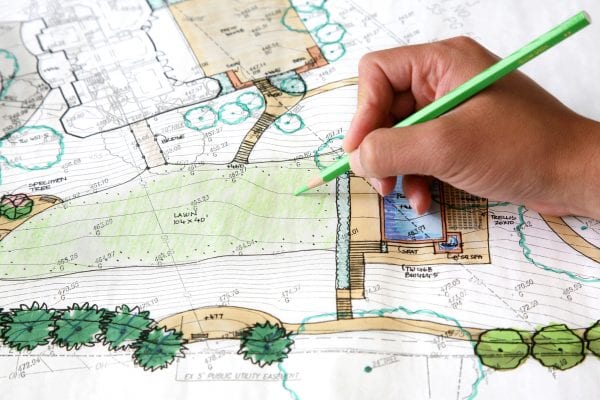
Do-it-Yourself
Some homeowners take on the task of the design and installation of the landscape by themselves. This is the least expensive option in the short term, and it is probably the most fun for the serious gardener.
This do-it-yourself option, however, offers the greatest risk of poor design and poor plant selection and incorrect installation—any of which may cost you more in the long run. It is obvious, too, that this option requires the greatest time and effort on your part.
Starting the Design
Whether you want to do it yourself or leave it to the professional, it is helpful to understand the process that is involved in designing a landscape:
- Analyze your site and develop a base plan.
- Determine your landscape needs and sketch outideas to meet those needs.
- Choose the plants and construction materials that you will use to achieve your ideas.
- Create your design on paper.
 Site Analysis and Base Plan
Site Analysis and Base Plan
The first step in designing your landscape is to perform a site analysis. Site analysis begins with a base plan
or base map and an inventory of what already exists on your property (figure 1). Sketch out your house, existing structural features of the property, and plants. This is done in a plan view, from the perspective of looking down on your property from the sky. Measure the dimensions of the house and draw and label existing features and plants on the base map. Draw to scale,such as 1′′ = 8′ (1 inch on the ruler represents 8 feet onthe plan). Or draw on graph paper with each square on the paper representing 1 foot.
Consider and note factors that can affect your landscape:
- Locate the boundaries of your property and the house’s location on the property. Measure the dimensions of your house and the location of the house within the boundaries. Draw the outline of the house on the plan.
- Find the boundary or point on the property that is in the north direction. This is needed when plotting the directions of the sun and winds.
- Locate the position of utilities, the aboveground power lines, and underground gas, water, and sewer pipes. Record these on your base plan.
- Indicate where existing plants are located on the property. Name them if you can. Measure or estimate the sizeof the plants or the space they occupy, and draw them to the scale you selected for your plan. You may want to keep these plants or remove them in your final landscape.
- Note functional areas of your yard that have specific uses. Examples are play and recreation areas (anything from a sandbox to a tennis court) and areas for storing tools and growing vegetables. Also note where you or others usually walk or where you might want to direct such foot traffic.
- Note environmental factors. These are important to note on any site. Mark the path of the sun from east to west and observe sunny areas as well as shaded areas cast in your yard by surrounding trees and structures. Mark the direction of winter winds (NE) and summer winds (SW). Indicate characteristics of your soil—clay or sand, wet or dry, fertile or infertile. Your county Extension agent has information on getting your soil tested. This test is simple to do and very important when you begin planting your landscape. Indicate the topography of your lot—the way your lot slopes, how much it slopes, ravines or ridges, and rocks or outcroppings. You may already have a survey map of your property with such facts on it, or you may wish to get one made by a licensed surveyor.
- Indicate whether views are on or off your property, good or bad, and whether these need screening or framing. Views are not just how others see your property but are also how you view your landscape from within the house.All of these factors will influence the way you landscape your home and the location of plants. You don’t want to place a tree under power lines. In a few years, you may have to severely prune it to prevent electrical problems. Some plants, like elm trees, have very vigorous root systems. If planted within 50 yards of water or sewer lines, elm roots can grow into the pipes, either cracking or clogging them.
Whether views are good or bad will determine where you place plants. If your property is attractive, you may want to leave views of it open. If you sit on your patio and view your neighbor’s garbage cans, plant a shrub screen to hide this or other unattractive views.
Environmental factors have a great influence on plant placement and choice. An attractive, healthy plant placed in an unsuitable site may have poor growth, disease, and insect problems or it can die. This might occur from too much shade or sun, poor water drainage, or poor fertility.
These are some examples of the careful thinking you must do to design a landscape. Planning is important because it will determine how plants should be used. Planning can be critical in helping you decide what kinds of plants are the best choices for your landscape. Careful consideration of these and other features of your property will help prevent later problems.
In site analysis, you are assessing both the negative and positive aspects of your property and how to downplay or highlight them successfully with landscape plants.
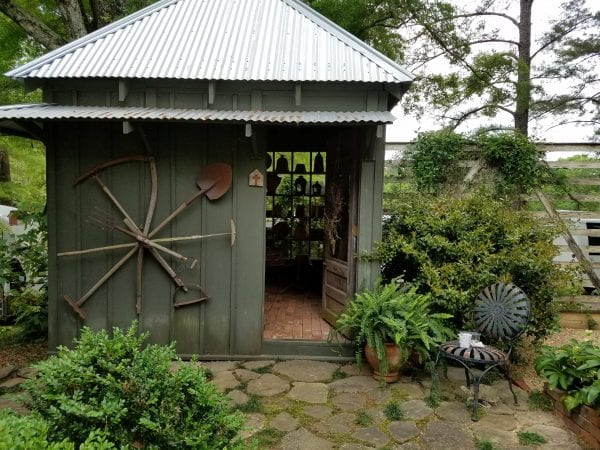
Match Your Needs
The next step in your design is to very generally organize the outdoor living area to meet your needs or desires. You do this much like you determine how you will use rooms in your house. There are three major areas in the landscape: the public area, the private area, and the service area. A bubble diagram is used to layout a general plan of how you wish to use landscape space (figure 2). A piece of tracing paper taped over your base plan can be used for sketching your ideas for the broad, general use areas.
The public area is usually the area in front of the house that is visible to the public. The house is the central focus of this part of the landscape. The public area design should be kept simple and uncluttered.
Allow space for your guests to park. If your lot is small, they may have to park in the street. Otherwise, you could design a double driveway, a circular one, or one with parking areas near the house.
Through the use of plantings and walks, direct your guests to the public entrance to your home. If you want them to notice and use the front door, focus their attention on it. A few bright flowers and specimen or unusual plants may do this.
A walk leading from your drive to the front door will also guide guests. Design the walk wide enough for two people to walk comfortably side by side. The walk should offer a fairly direct path with perhaps a few slight curves for interest. A long, winding walk with large curves may be attractive, but if it is never used, there is no reason for having it. This applies not only to walks in the front yard but also to any in your landscape. Unless you desire a formal effect and your guests park on the street, avoid walks leading down the middle of the front yard.
The private area is traditionally located near the family portions of the home, usually the backyard. Its main purpose is privacy
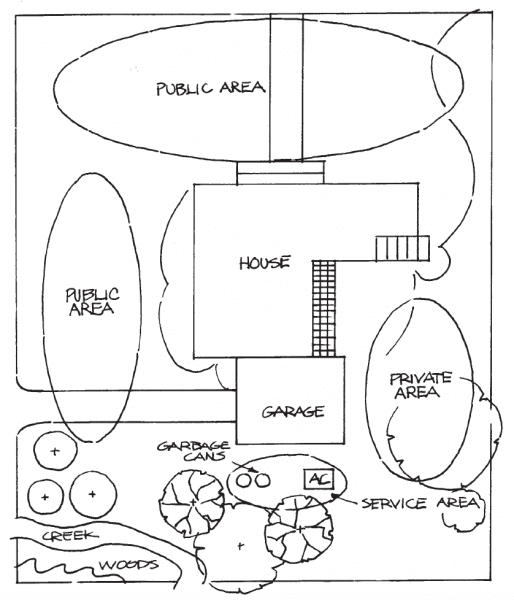
Figure 2. Bubble diagram shows a general layout for use of space.
for your family. This may be obtained by an attractive border or screen plantings and walls or fences made from wood, stone, or metal.
The private area should also serve as a place to entertain guests and a place for rest, relaxation, and recreation. To fulfill these desires, you may include a patio, terrace, pool, lawn, shade trees, or a greenhouse. You may have a play area for small children or sports areas for older children. The private area is also the place for your favorite flowers, flowering shrubs, and roses. This is where your family and their guests spend the most time and can enjoy them to their fullest. You may also include a few specimen plants in a border or leave a vista open to enjoy distant views.
The service area does not have to be attractive or large; its size and use depend on the family needs. It should be located nearest the kitchen or garage. The service area is the place for the garbage cans, air conditioning condenser, a utility building, firewood pile, compost bin, or a vegetable garden. This area is usually screened from the view of the other areas.
These general landscape areas should relate to each other in much the same way that rooms in the house are related. You can tie them together with the use of a continuous lawn (corresponding to a wall-to-wall carpet inside). Each area is often separated to some extent by plants or physical boundaries, much as rooms of a home are separated by walls. Don’t block off areas completely. Allow for movement between them, as in a lawn or walk from the front yard to the back. This is similar to interior doors and hallways.
Principles of Design
All effective landscape designs rely on basic principles. An understanding of these principles can keep you from creating a landscape beast instead of the beauty that you dream about.
Unity, simplicity, variety, balance, sequence, and scale are terms often associated with art. These terms are used to guide an artistic expression, and in landscape design, they are just as important as in other art forms.
Unity describes the idea of tying the landscape together in an orderly design. Different parts of the landscape should relate to each other. You should get a sense of visual flow from one part of the landscape to the other so that features of one part remind you of another. Some repetition of a feature of the landscape is good, but it should not be carried to the point of monotony. Unity in the landscape can be achieved through a theme of colors, forms, or textures without using exactly the same plants. For example, a red color may be used as a theme, but you could use plants with reddish foliage as well as other plants with similarly colored flowers or foliage. The plants would be in different areas of the landscape, but the color theme unites the overall design. Other themes, such as kinds of plants, curves or straight lines, and construction materials, can be used to create unity in the design.
Too many design themes can be confusing, however, and unity of design lost, so you need to keep the design simple. Simplicity (figure 3) is an important principle of design, but it is a hard one to achieve. Too many different colors, textures, and forms result in visual confusion, and any sense of design can be ruined. One way to achieve simplicity is by using a limited range of plant species.
On the other hand, you need to provide some variety (figure 4) in the landscape. Oversimplification is boring; some variety must be sprinkled in for interest and to focus attention on the desirable aspects of your property. Don’t use the same kind of plant everywhere. A long hedge of the same kind of plant can be very monotonous, for example. Instead, break up plants into groupings, maintaining some of the same plants in the groupings but adding other plants for variety.
A fourth principle of design is balance. In landscape design, think in terms of visual balance. The idea is to balance the visual weight of objects in the landscape. Balance can be symmetrical—one side of an area looks just like another. It gives a sense of stability. The overall effect is very formal.
Balance can also be asymmetrical. Asymmetrical balance can be achieved with a mass planting of shrubs or a tree on one side of the house visually balancing a chimney on the other side. Asymmetrical balance is dynamic. It tends to suggest movement.
A change in form, color, texture, or size should be gradual in the landscape. A gradual change is part of the principle of sequence. Sequence is used to direct the eye smoothly to a desired focal point like the front door or a specimen shrub. Sudden changes in appearance break the visual flow around the landscape.
Proportion or scale refers to how objects, like plants, people, or structures, relate to each other in size. Proportion can be used to evoke emotion. Large scale causes a humbling of the observer; a large tree or massive screen can seem imposing, for example. Small scale gives a sense of viewer dominance or perhaps a desire to care for the smaller objects; dwarf plants, such as miniature roses, are examples.
- Figure 3. Simplicity has its place too. Uniform colors and textures offer this public entry space a clean look.
- Figure 4. Variety adds interest to the design. Combining just two to three unrelated materials offers a good mix.
Design Graphics and Symbols
Standard symbols are used to depict on the plan the kinds of plants and structures to be used in the landscape (figure 5). For example, a broadleaf deciduous tree like a dogwood may be depicted with a rounded canopy line or as leafless branches. Broadleaf evergreen shrubs, like azaleas, might be illustrated as circles with rounded edges. Pines and other needle evergreens are often pictured with sharp edges. The use of fancy symbols in your landscape plan is not essential; simply using circles drawn to scale with a circle template is all right as long as you are consistent. But it is helpful to be familiar with the symbols that are typically used so you can recognize the general kinds of plants used as you look at the plan of a professional landscape design.
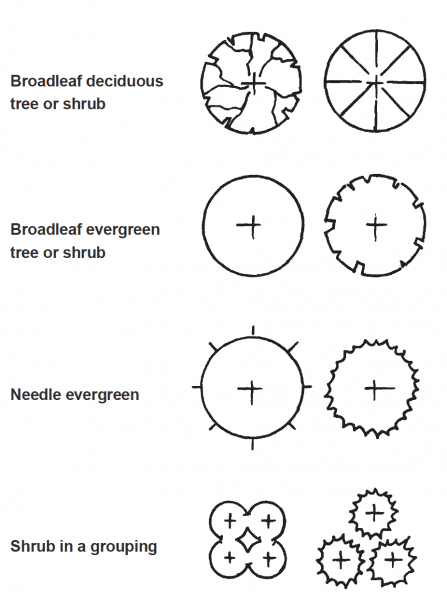
Figure 5. Standard symbols depict the kinds of plants and structures on the plan.
Keep in mind that the circles used to represent the plants should be drawn to scale such that the plants are illustrated at their mature size. Put plants on the plan as if someone else would need to know exactly where you want plants to be planted.
The landscape plan is of little use unless the plants are identified on the plan (figure 6). This is known as keying, and, although it is somewhat tedious, it is important. After all, you may put your plan away until you can afford to install another portion of your landscape. You may forget what plants were selected; without the key, you are lost. On the key, include the number and size of plants that need to be purchased. Also include the scientific names of plants to avoid confusion when you purchase them.
It is most common for homeowners to install their landscape design in stages. It certainly doesn’t have to be done all at once. If limited funds or other reasons cause you to spread out the installation of your landscape over time, consider this priority system for getting the design from the plan into the ground:
Establish a lawn or a groundcover first to prevent soil from washing or blowing away.
- Put trees in next, because they take many years to become established.
- Add foundation, corner, and entrance plantings. These plantings around the house add to its appearance, adorn the house, and tie it down.
- Use borders and screens to create spaces and serve other functions.
- Refinements such as flower beds, ponds, lighting, and specimen plants are all possible additions for many areas of the landscape.
The landscape is dynamic. It changes by the hour as sun and shade move across the yard. It changes by the day as flowers bloom and fade. It changes by the season as leaves change color and flowers develop into fruit. It changes through the years as plants grow, expand, and reproduce. Balancing and using these factors and others to enhance the beauty and value of your property is part of the challenge and joy of residential landscape design.
Plants as Elements of Design
Plants are used as materials, or building blocks, to apply the principles of design. Plants offer qualities that help direct foot traffic in the landscape, moderate the environment around the home, hide objects, or lead the eye and stimulate other senses like smell and touch. Plants should be used together to enhance the best features of your property.
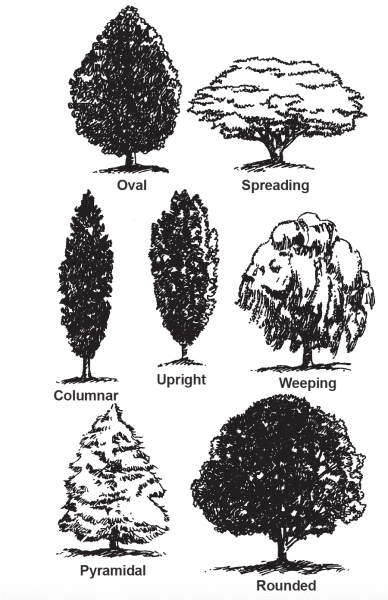
Figure 6. Landscape plants are available in several forms.
The basic elements that plants offer to the landscape to express the principles of design are form, texture, and color.
Plants grow in a characteristic general form determined by genetics or the environment. Form generally refers to the silhouette or outline of the plant (figure 6). A plant can be selected for the way its form can be used in the landscape to complement the house or achieve the principles of design. For example, a prostrate plant can be used under a low window. Rounded trees or shrubs can be used with oval, spreading, or weeping plants in a pleasing border. Use conical plants carefully; they tend to dominate a landscape because of their prominent form.
Texture can refer to a plant’s feel, but generally in the landscape, visual texture is the main consideration. Large leaves cast distinctive shadows in the plant canopy, offering a coarse appearance. Finer-textured foliage offers a more uniform shade pattern. Texture can be used to affect the sense of scale. A fine-textured plant used near the viewer with a coarse-textured plant farther away gives a subtle sense of decreased distance. It makes your property or structure seem smaller.
Color has a strong effect in the landscape; use color with discretion. Don’t plan the landscape with onlyflowering plants in mind. Use 80 to 90 percent of theplants for foliage effect. Some variety in foliage color is needed, but green provides the continuity as well as the backdrop for carefully used color. Color should be used to focus attention on an area of the landscape and to complement the house. Colors should complement each other as well. Use similar hues together. Mass colors; don’t alternate colors. Alternating breaks up the visual sequence and is distracting.
Selecting the Right Plants
The artistic qualities of landscape design have been discussed, but there is also an important aspect of plant science to consider. Plants are living things and, therefore, have basic environmental and maintenance requirements. As you select the plants that you want to use for your landscape design, it is important that you consider these requirements. By giving careful attention to the growing conditions and unique needs of certain plants before you use them in your landscape design, you can reduce pesticide use; reduce maintenance efforts, such as pruning; and encourage longer-living, better-looking plants. In other words, you can save a lot of effort and money.
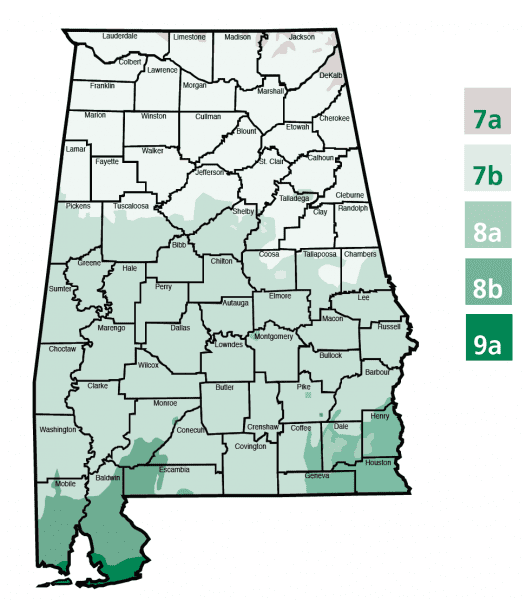
Figure 7. The USDA Plant Hardiness Zone Map indicates average minimum temperatures throughout the state.
Consider several factors about a plant before you use it in the landscape:
- cold hardiness or heat tolerance
- light requirement
- moisture requirement
- soil drainage needs
- soil pH requirement
- pest susceptibility
- rate of growth and mature size
Cold Hardiness and Heat Tolerance. Many plant reference books provide a United States Department of Agriculture Plant Hardiness Zone Map broken into zones of average minimum temperatures (figure 7). References will indicate the hardiness zone for each plant. Select only plants that can take the average lowest temperature in your region. Alabama primarily covers two hardinesszones: Zone 8 reaches from Shelby County southward; zone 7 is above this. Average minimum temperature for the southern half of Alabama is 10 to 20 degrees F. The northern half of the state averages 0 to 10 degrees F minimum temperature. A few locations in extreme northern Alabama have colder winters. Our coastal beaches have very mild winters.
Plant heat tolerance is harder to get a handle on. Fewer references provide this information. But look around your community, especially in the southern half of the state. Spruce, white pine, or lilacs are not doing well, partly because of the stress of long, hot summers.
Light Requirement. Plants can differ greatly in the amount of light they need to thrive. For example, daylilies need full sun, while hostas can be damaged unless partially shaded. Select plants that require the amount of sun or shade available in your landscape.
Moisture Requirement. As with light, plants can differ in their need for water. Santolina thrives in a dry site but dies if kept too wet. Try to select and group plants that have similar water needs. This encourages plant survival and improves efficiency of water use in the landscape.
Soil Drainage. Even plants that need a lot of water can be killed if they are planted in a poorly drained soil. Plant roots need some oxygen to function normally; this is supplied in air spaces in the soil. If a soil has small air spaces between soil particles, it is more likely to hold moisture instead of draining out and being replaced with air. The result can be root death followed by plant decline. Many hollies, azaleas, dogwoods, and junipers are lost causes if the soil has poor internal drainage or percolation. Check or correct soil drainage or select appropriate plants.
Soil pH Requirement. If the soil pH is not in an acceptable range, some plant species have a difficult time taking up certain nutrient elements. The result can be a chronically yellow and poorly growing plant. Azaleas and other acid-loving plants need a low soil pH. Check the pH with a soil test. In some naturally high pH soils, acid-loving plants should not even be considered for the landscape.
Pest Susceptibility. Some plants are very susceptible to insect and disease problems. You can spend a lot of time and money on pesticides to keep those plants looking good. Excessive use of some pesticides can also be environmentally unsound. The problem can be reduced from the start if you are careful about the plants you select for your landscape. Roses should not be planted if cedar trees grow nearby as they are alternate hosts for a rust disease. You can count on scale insects if you use Japanese euonymus.
Rate of Growth and Mature Size. A common mistake in landscape design is to underestimate how big a plant will get. Keep the mature size of the plant in mind when designing the landscape. Select plants that will reach an appropriate size for the location you have in mind. Or select plants that can be kept in bounds with little effort.
Arranging Plants in the Landscape
In most residential landscape situations, plants are usedor arranged in seven basic ways (figure 8).
The specimen plant is a center of attention. It deserves a prominent place in the landscape. However, you should use plants sparingly in this way because the specimen can dominate the landscape so much that it detracts from the overall landscape unity.
An accent is like a specimen but more subtle. Consider it a featured plant in a grouping of other plants.
Corner plantings are groups of plants used to “tie down” the corners of the house. Corner plantings blend the vertical line of the wall with the horizontal plane of the ground. The corner planting should not grow higher than two-thirds of the height of the eaves, although this is not a hard and fast rule and creativity can be the overriding consideration. However, the corner planting should involve a sequence of lower-to-higher or higher- to-lower plants.
Foundation plants, like corner plantings, help anchor the house to the ground. The foundation planting should also direct the eye of the viewer to the entrance. Generally, taller plants are placed on, or beyond, the corners with the height of plants descending toward the entrance. Do not think you have to put plants all the way across the foundation. The main idea is to anchor and direct, not camouflage.
Plants used to identify an entryway like the driveway, a garden gate, or an entry to the house are called entrance plantings. Groupings of plants should be used in such a way to clearly invite the viewer to the designated place of entry.
Groupings of plants used to divide and define spaces in the yard are called borders. Borders, especially in the corners of the property, often should be taller near the center and taper to the ends. Leave spaces between borders to avoid monotony and create windows to enhance views. Borders don’t, however, have to be tall. For example, a low border can be used to separate a driveway from the lawn. It can serve to direct foot traffic.
Screens are groupings of plants used to hide or cover unwanted views or objects. Evergreen plants are an important part of screens, but they should not be the only plants used. Add deciduous plants for variety in color and texture. The screen needs to be at least 6 feet high to be effective.
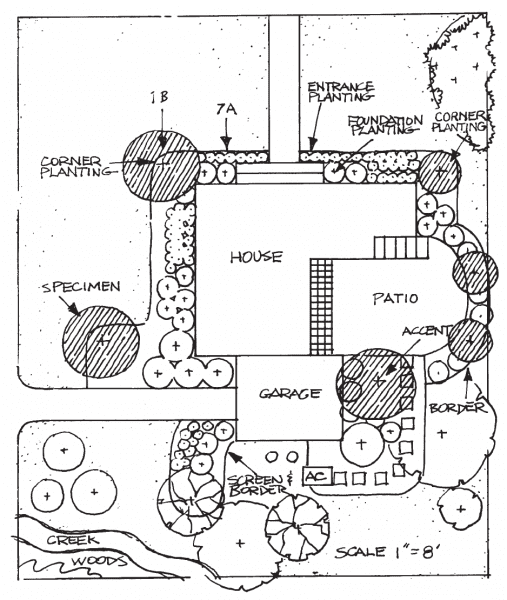
Key
A Crimson pigmy barberry, Berberis thunbergii var. atropurpurea Crimson Pigmy.
B Natchez crapemyrtle, Lagerstoemia indica Natchez.
Figure 8. Arranging plants in the landscape requires careful planning and thought.
Landscape plants should be arranged in defined, mulched beds. Planting beds should have either straight or gradually curving lines to make maintenance easier and to make them useful to easily direct the eye. Sudden dips and jags are unattractive. Bed lines areoften oriented at a 90-degree angle where they meet asidewalk or structure. This gives a sense of completion to the bed line. However, a gentle curve that meets a walkway offers a softer look. Either is a matter of preference. Where possible, include trees in mulched beds. Even a mulched area around specimen trees is desirable to protect them from lawn mower and string trimmer injury.
When planning your landscape design and choosing plants for it, always keep in mind an idea of what you want to create. This guiding idea is the same as an approach, concept, or theme. It should fit with your home and its surroundings. If you have a wooded lot and rustic home, you might take a naturalistic approach using such plants as azaleas, dogwoods, and oaks in groups. If your home is formal, arrange shrub and flower beds in more symmetrical patterns with straight lines and use such formal plants as clipped hedges of boxwoods. Yuccas and junipers complement Spanish architecture, and old-fashioned plants such as crapemyrtle and jasmine complement colonial homes. A landscape design without a guiding theme can be neither effective nor attractive.
Keep your landscape simple. Use a small number of plants with different characteristics; and repeat these. Use even fewer unusual plants. Use simple lines for edges of borders, walks, and drives. And use simple arrangements for groupings of plants. Take your plan to your local garden center for suggestions or help in plant selection.
Simplicity is the key to both lower maintenance and effective landscapes. Simplicity, combined with your creativity, is the key to a landscape that your family can use and enjoy.
Download a PDF of Residential Landscape Design, ANR-0813.
Edited by Kerry Smith, Extension Administrator, Outreach Programs. Written by J. David Williams and Ken Tilt, former Extension Horticulturists, Auburn University
Revised September 2019, Residential Landscape Design, ANR-0813

